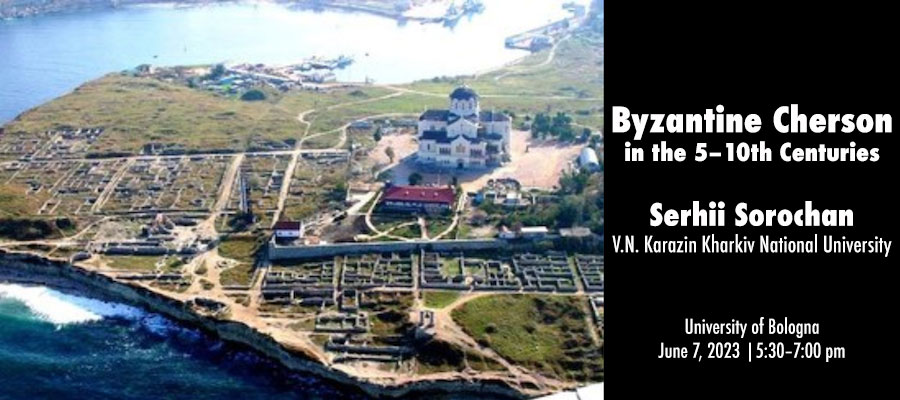Byzantine Cherson in the 5th–10th Centuries, lecture by Serhii Sorochan (V.N. Karazin Kharkiv National University), University of Bologna online, June 7, 2023, 5:30–7:00 pm
The lecture will focus on the most important center of early medieval Taurica - Byzantine Cherson. We will define the range of political and economic efforts and actions that served the Byzantine Empire to maintain its position on the Crimean peninsula. The city, as the capital of the region, maintained very close contacts with the Dory - the Crimean Gothia. This is precisely where the fortification system attributed to the Turkic threat in the 570s-580s was built. In the same period, the doukaton was established as the military-administrative system on the frontier of the Empire. At the end of the 6th-7th centuries, active construction was taking place in Cherson, which was probably connected with the consequences of earthquakes that occurred at the end of the 550s. Some interesting conclusions can be drown about the topography of the necropolis, which began to move from the suburbs to the inner city. From the end of the 7th century, a special status of Byzantine-Khazar relations was established on the Crimean peninsula, which can be defined as a condominium. The hypothesis of a Khazar dominion in the Crimea should be abandoned. In the third decade of the 9th century, the archontate was replaced by the theme Klimata with its capital at Cherson. It was at that time that the praetorium complex was erected on the territory of the citadel. There are no grounds for claiming that the city was self-governaned. Its economy was strongly connected to transit trade with Pechenegs and Byzantium. An important social phenomenon was the completion of the formation of an ethno-confessional community in the form of a single medieval ethnic group in Taurica by the fourth decade of the 10th century.
